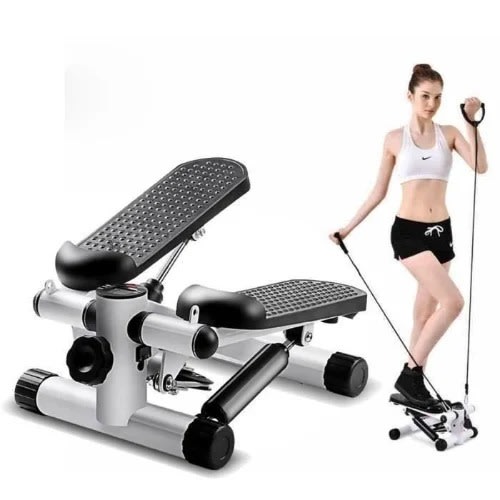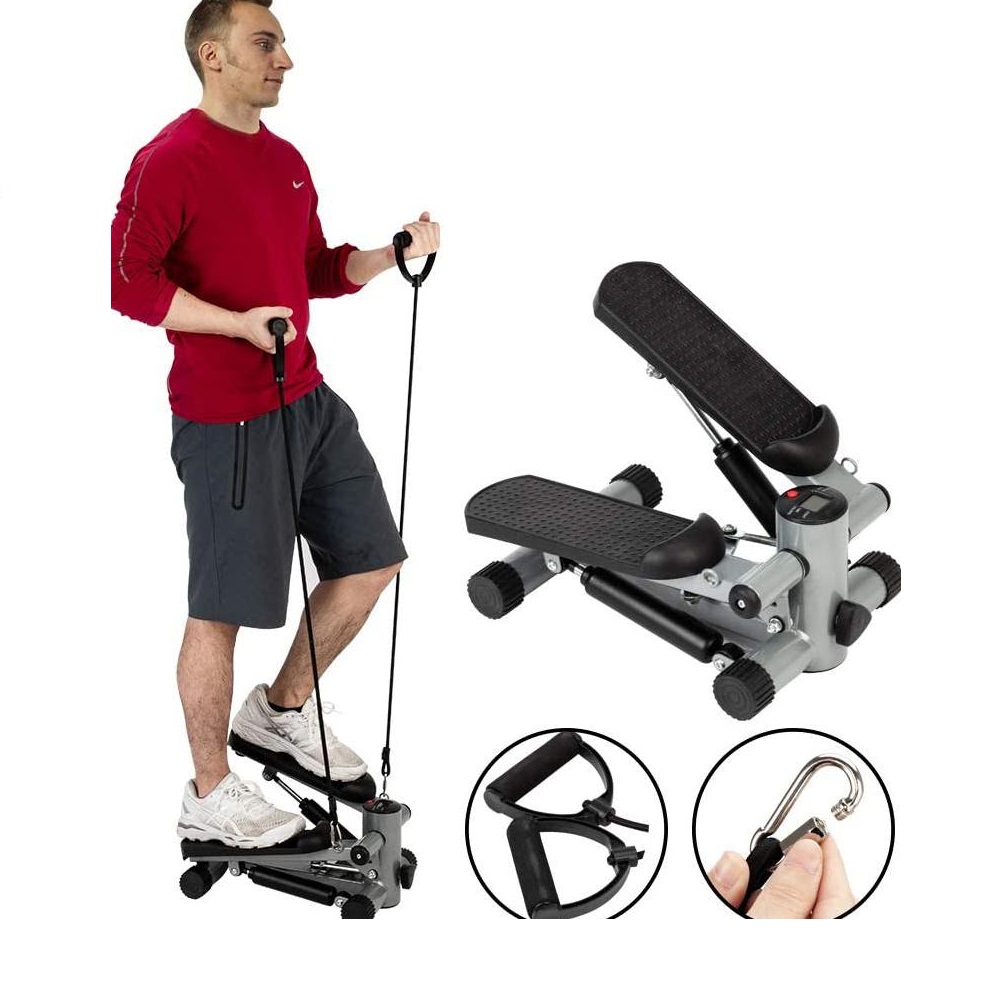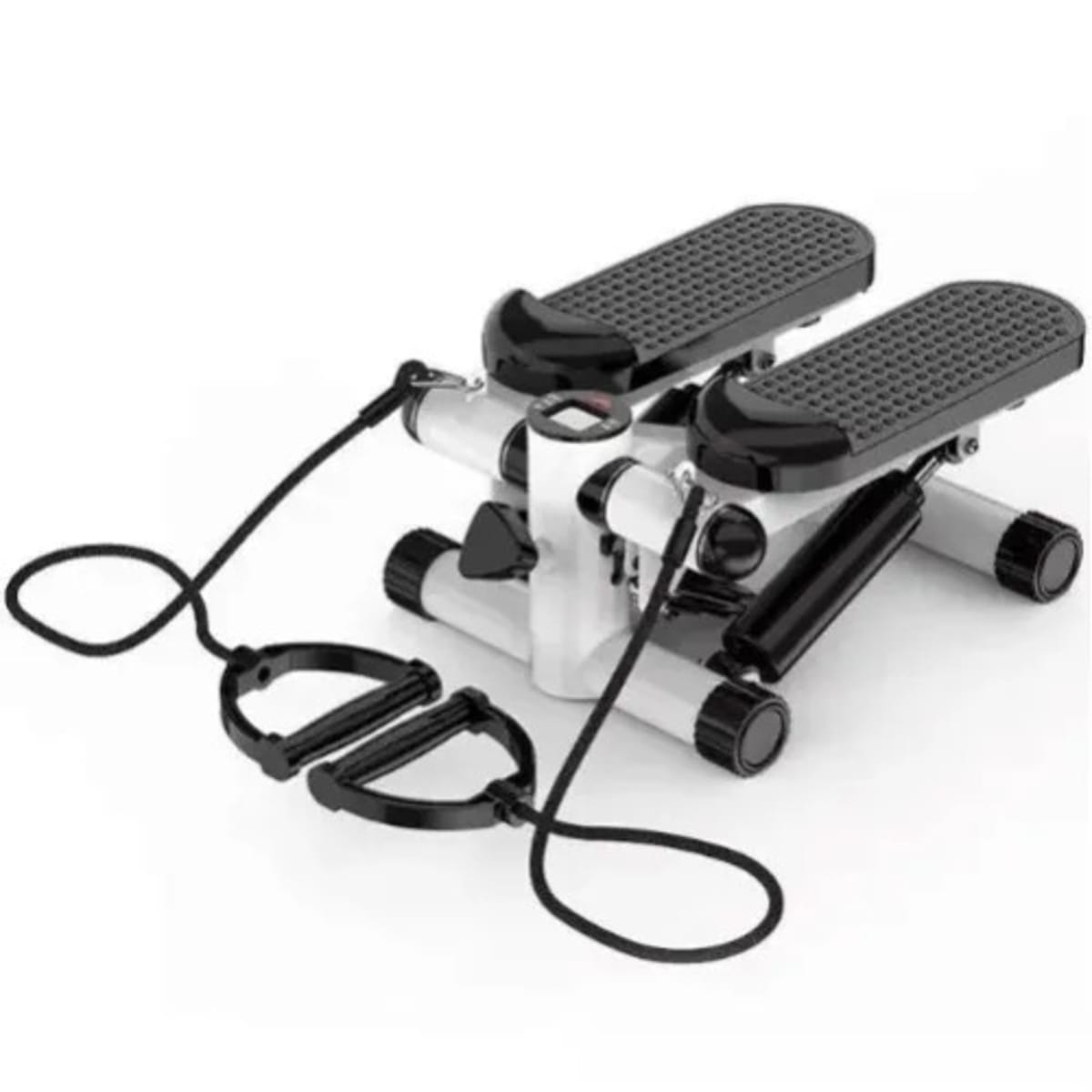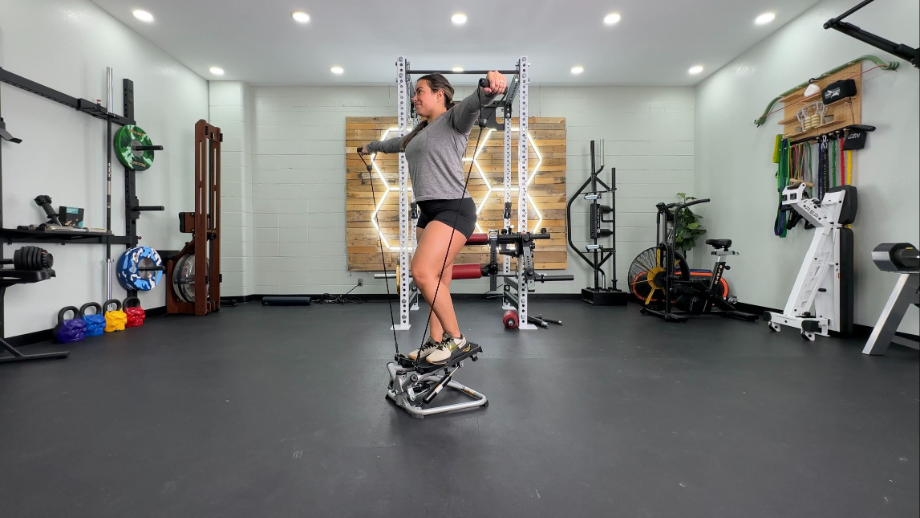Getting Started with Your Mini-Stepper: A Comprehensive Guide to Effective Workouts
Congratulations on your recent purchase of a mini-stepper! You’ve taken a significant step toward improving your fitness and overall health. Mini-steppers are an incredibly convenient and effective piece of exercise equipment that can help you achieve your fitness goals from the comfort of your home. However, like any new endeavor, it’s essential to have the right guidance to make the most of this versatile tool.
In this comprehensive guide, we’ll walk you through everything you need to know to embark on a successful mini-stepper fitness journey. Whether you’re a complete beginner looking for a gentle start, a high-energy individual interested in intense workouts, or someone who can only spare a few minutes a day, we’ve got you covered. With our step-by-step instructions and helpful tips, you’ll be on your way to a fitter, healthier you in no time.

So, let’s lace up those sneakers and get ready to step into the world of mini-stepper workouts. Together, we’ll explore the various workout levels, discover the benefits, and learn how to set realistic fitness goals. By the end of this guide, you’ll be equipped with the knowledge and motivation needed to crush your fitness goals and enjoy a healthier, more active lifestyle. Let’s get started!
Understanding Your Mini-Stepper
Now that you’re ready to explore your mini-stepper workouts, it’s essential to start with the basics. Understanding your mini-stepper and knowing how to use it correctly is the foundation for a safe and effective exercise routine.
Components of a Mini-Stepper

A typical mini-stepper consists of a few key components:
- Pedals: These are the platforms where you place your feet while stepping. Mini-stepper pedals usually move up and down or in a circular motion.
- Handles: Some mini-steppers come with handles for added stability and support. These handles can be stationary or movable, depending on the model.
- Resistance Settings: Many mini-steppers allow you to adjust the resistance level of resistance bands. This feature allows you to increase or decrease the difficulty of your workouts.
Assembling and Setting Up Your Mini-Stepper
Before you start working out, make sure you’ve correctly assembled and set up your mini-stepper. Here are some general tips to help you get started:

- Read the Instruction Manual: Always read and follow the manufacturer’s instructions for assembling your mini-stepper. These manuals provide step-by-step guidance to ensure your safety and the longevity of your equipment.
- Sturdy Surface: Place your mini-stepper on a flat and stable surface. Make sure it won’t wobble or tip over during your workout.
- Foot Placement: Position your feet squarely on the pedals. Your weight should be evenly distributed, and your posture should be upright.
- Adjustable Settings: Set the resistance level to a comfortable starting point. If you’re new to exercise, it’s best to begin with a lower resistance and gradually increase it as you become more comfortable.
- Safety First: Always maintain proper balance and posture while using the mini-stepper. Use the handles if your mini-stepper is equipped with them to maintain stability.
Safety Precautions
Safety is paramount in any exercise routine, and mini-stepper workouts are no exception. Here are some essential safety precautions to keep in mind:

- Consult Your Physician: If you have any pre-existing health conditions or concerns, it’s advisable to visit a healthcare professional before starting any exercise program.
- Warm Up: Spend a few minutes doing some light warm-up exercises like leg swings or ankle circles to prepare your muscles for the workout.
- Proper Footwear: Wear comfortable and supportive athletic shoes that provide good traction to prevent slipping.
- Hydration: Stay hydrated before, during, and after your workout. Have a water bottle within reach.
- Listen to Your Body: If you feel pain, dizziness, or discomfort during your workout, stop immediately and rest. Pushing through pain can lead to injury.
Mini Stepper Workout Benefits
Now that you’re familiar with your mini-stepper and have it set up for your workouts, it’s important to understand the numerous benefits that come with incorporating this versatile fitness tool into your routine. Mini-stepper workouts offer a wide range of advantages that can help you achieve your fitness goals and improve your overall health.

1. Cardiovascular Health
Mini-stepper workouts are a fantastic way to improve your cardiovascular health. Stepping on a mini-stepper elevates your heart rate, which, when done regularly, can strengthen your heart and increase its efficiency. This can lead to better blood circulation, reduced risk of heart disease, and improved endurance.
2. Toning and Strengthening
Stepping engages multiple muscle groups, including your quads, hamstrings, calves, and glutes. It’s a great way to tone and strengthen your lower body. Over time, you’ll notice improved muscle definition, increased leg strength, and enhanced overall balance.
3. Health and fitness: Weight Management
If your goal is to shed a few pounds or maintain your current weight, mini-stepper workouts can be highly effective. They burn full body calories and contribute to a calorie deficit, which is essential for weight loss. By adjusting the intensity and duration of your workouts, you can tailor your mini-stepper routine to meet your specific weight management objectives.
4. Convenience
One of the standout benefits of a mini-stepper is its convenience. It’s compact and portable, making it an ideal choice for those with limited space at home. You can easily set it up in front of the TV or while working at a standing desk. This convenience encourages consistency, a key factor in reaching your fitness goals.
5. Time Efficiency
Whether you have a busy schedule or just prefer shorter workouts, mini-steppers can accommodate your needs. You can perform effective workouts in as little as 10-20 minutes, making them perfect for fitting into a hectic day.
Mini-Stepper Workout Plan for Beginners

For those who are just starting their fitness journey or are new to mini-stepper workouts, it’s crucial to begin with a beginner-friendly routine. Starting with a solid foundation will not only prevent injury but also help you build confidence and gradually increase your fitness level. Below is a basic mini-stepper workout suitable for beginners:
Warm-Up: 5 Minutes
Begin your mini stepper workout work with a light warm-up to prepare your core muscles – joints, and lower body muscles. You can perform the following warm-up exercises:
- March in place: March on the mini-stepper without resistance for 2-3 minutes.
- Leg swings: Stand beside the mini-stepper and gently swing one leg forward and backward to improve hip mobility. Repeat for 30 seconds on each leg.
- Ankle circles: Sit down on a chair and extend one leg. Rotate your ankle clockwise and counterclockwise for 15 seconds on each leg.
Main Workout: 15-20 Minutes
For the main workout, you can follow this routine:
- Step-Up and Down (5 minutes): Start with both feet on the pedals. Step up with one foot and then the other, repeating this movement for 2.5 minutes on each leg. Maintain a steady pace, and focus on maintaining proper form and balance.
- Alternating Steps (5 minutes): Continue stepping up and down, but alternate the leading leg every 30 seconds. This exercise helps work both legs evenly.
- Side-to-Side (5 minutes): Instead of stepping up and down, step side to side on the mini-stepper. This exercise engages different muscles and improves your lateral stability.
- Cool Down (2-3 minutes): Gradually reduce your pace and step on the mini-stepper with little to no resistance to cool down. Perform some light static stretches, focusing on your calves, quads, hamstrings, and glutes.
Tips for Beginners:

- Focus on maintaining proper posture throughout the workout. Keep your back straight, shoulders relaxed, and core engaged.
- Start with minimal or no resistance and gradually increase it as you become more comfortable with the routine.
- Pay attention to your breathing. Inhale through your nose and exhale through your mouth in a controlled manner.
- Don’t push yourself too hard in the beginning. It’s more important to maintain proper form than to push for high intensity.
As a beginner, consistency is key. Aim to perform this workout at least 3-4 times a week, gradually increasing the duration and intensity as you become more confident and conditioned. Over time, you’ll notice improvements in your cardiovascular fitness, balance, upper body, and muscle tone.
High-Intensity Interval Training (HIIT) with Your Mini-Stepper machine
/product/37/4626161/1.jpg?0218)
If you’re looking to take your mini-stepper workouts up a notch and want a more challenging, calorie-burning routine, High-Intensity Interval Training (HIIT) is a fantastic option. HIIT is known for its efficiency in improving fitness and burning calories in a short amount of time. Basically, they are resistance band strength training and bodyweight exercises. Here’s a sample HIIT routine using your mini-stepper:
Warm-Up: 5 Minutes
Begin your HIIT workout with a warm-up, which should include a few minutes of light cardio to prepare your body for the intense intervals. You can choose between marching on the mini-stepper without resistance or performing leg swings and ankle circles as described in the previous section.
Main HIIT Routine: 15-20 Minutes
HIIT workouts consist of short bursts of high-intensity exercise followed by brief periods of low-intensity or rest. For this mini-stepper HIIT workout, aim for a 1:1 work-to-rest ratio, meaning that if you work intensely for 30 seconds, you rest for 30 seconds. Here’s a sample routine:
- High-Intensity Step-Up (30 seconds): Set your mini-stepper to a higher resistance level. Step up and down as fast as you can while maintaining proper form and balance.
- Low-Intensity March (30 seconds): Reduce the resistance to a low or no-resistance level. March in place on the mini-stepper at a slow pace to recover.
- Alternating Steps at Medium Intensity (30 seconds): Increase the resistance slightly and step up and down, alternating legs. Move at a moderate pace.
- Low-Intensity March (30 seconds): Reduce the resistance to recover.
- High-Intensity Side-to-Side (30 seconds): Increase the resistance and step side to side as quickly as possible. Focus on maintaining balance and form.
- Low-Intensity March (30 seconds): Reduce the resistance to recover.
- Repeat the above cycle for 10-15 minutes. You can increase or decrease the workout duration based on your fitness level.
Cool Down: 5 Minutes
Finish your HIIT workout with a 5-minute cool-down to gradually lower your heart rate. March in place with minimal resistance or no resistance to ease your body back into a relaxed state. Perform static stretches to target your leg muscles, hips, and lower back.
Tips for Mini-Stepper HIIT Workouts:
- Start with a resistance level that challenges you but allows you to maintain proper form.
- Focus on quick, controlled movements during the high-intensity intervals.
- Pay attention to your breathing and maintain a consistent rhythm.
- Ensure that you have proper balance and stability during high-intensity movements.
- Stay hydrated throughout the workout and listen to your body. If you feel any discomfort or pain, stop and rest.
HIIT is an excellent way to boost your cardiovascular fitness, burn calories, and improve your endurance. Incorporate this routine into your fitness plan 2-3 times a week to see significant progress. As you become more accustomed to the intensity of HIIT, you can experiment with increasing the resistance levels and extending the duration of your high-intensity intervals for even greater results.
Short and Effective 10-Minute Mini-Stepper Workout

We understand that not everyone has the luxury of spending hours at the gym or exercising for extended periods each day. In fact, for many of us, time is a precious commodity. But here’s the good news: a mini-stepper allows you to get an effective workout in just 10 minutes.
10-Minute Mini-Stepper Workout Plan for Busy Individuals
This quick and efficient routine is designed for those with limited time but a strong desire to stay active and maintain fitness. It will get your heart pumping, burn calories, and give your legs a fantastic workout.
Warm-Up: 2 Minutes
Start with a 2-minute warm-up. March in place on your mini-stepper without resistance to prepare your body for the workout.
Main Workout: 7 Minutes
For the main workout, we’ll be focusing on a high-intensity, 7-minute routine:
- Step-Up and Down (1 minute): Begin by stepping up and down as fast as you can, maintaining proper form and balance. This sets the tone for the workout.
- Alternating Steps (1 minute): Continue stepping up and down, alternating your leading leg every 30 seconds.
- Side-to-Side (1 minute): Change your direction to a side-to-side motion. Step quickly from side to side on the mini-stepper, engaging different muscles.
- Step-Up with High Knees (1 minute): Step up with one leg while raising your opposite knee as high as possible. Alternate between legs every 30 seconds.
- Alternating Steps at Maximum Speed (2 minutes): For the next 2 minutes, push yourself to step up and down as quickly as you can while maintaining proper form.
Cool Down: 2 Minutes
Finish with a 2-minute cool-down to lower your heart rate gradually. Reduce the resistance to a minimum or none at all, and march in place on the mini-stepper. Perform static stretches targeting your leg muscles and lower back.
Tips for 10-Minute Mini-Stepper Workouts:
- As this workout is short and intense, give it your all during the 7-minute main routine.
- Ensure that you’re using proper form and balance to prevent injuries.
- Stay mindful of your breathing throughout the workout.
- You can customize this routine by adjusting the resistance level to make it more challenging as you progress.
This 10-minute mini-stepper workout is perfect for busy individuals who want to stay on top of their fitness goals. Incorporate this routine into your daily schedule whenever you have a spare 10 minutes, and you’ll be amazed at how effective and efficient mini-stepper workouts can be. Over time, you can increase the duration or intensity of your mini-stepper sessions to further boost your fitness.
Longer Workouts: Maximizing Results in 20 Minutes
If you have a bit more time to spare and are ready to intensify your mini-stepper workouts, a 20-minute routine can help you maximize your results. This longer workout allows for more variety and targeted exercises, making it suitable for individuals looking to challenge themselves further and enhance their fitness.
20-Minute Mini-Stepper Workout
This extended workout offers a balanced combination of cardio, muscle toning, and endurance-building exercises to help you achieve your fitness goals.
Warm-Up: 3 Minutes
Start with a 3-minute warm-up to prepare your body for the more intense workout ahead. March in place on the mini-stepper without resistance or perform light leg swings and ankle circles.
Main Workout: 15 Minutes
The 15-minute main workout is structured to include a variety of exercises to engage different muscle groups:
- Step-Up and Down (3 minutes): Begin by stepping up and down at a moderate pace to warm up your muscles and raise your heart rate.
- Alternating Steps with Knee Lifts (3 minutes): Step up and down, alternating legs, while lifting your opposite knee as high as you can. This exercise enhances balance and engages your core.
- Side-to-Side with Resistance (3 minutes): Increase the resistance and step side to side on the mini-stepper. Focus on maintaining balance and control.
- Squat-Step Combo (3 minutes): Step up and down for a minute, then perform a set of bodyweight squats for a minute. Alternate between these two exercises.
- Alternating Steps with Resistance (3 minutes): Reduce the resistance level to focus on stepping up and down at a brisk pace, engaging your leg muscles.
Cool Down: 2 Minutes
Finish your workout with a 2-minute cool-down. Reduce the resistance to a minimum or none at all, and march in place on the mini-stepper. Perform static stretches targeting your leg muscles, hips, and lower back.
Tips for 20-Minute Mini-Stepper Workouts:
- Maintain proper form and balance throughout the workout.
- Focus on controlled, steady movements, especially when increasing resistance.
- Breathe consistently, and avoid holding your breath during exercises.
- Feel free to customize this routine by adjusting the resistance level to match your fitness level and goals.

A 20-minute mini-stepper workout allows you to target various muscle groups while getting your heart rate up. As you progress, consider increasing the duration or intensity of specific exercises within this routine. With consistency, you’ll see significant improvements in your cardiovascular fitness, muscle tone, and overall endurance.
Tracking Progress and Setting Goals
:max_bytes(150000):strip_icc():focal(599x0:601x2)/sunny-health-fitness-mini-stepper-with-resistance-bands-tout-a36f4860cd57429f8e03fd586a26c194.jpg)
Now that you’ve explored different mini-stepper workouts, it’s time to talk about tracking your progress and setting realistic fitness goals. Monitoring your journey is essential for staying motivated and ensuring that you continue to see improvements over time.
Why Track Your Mini-Stepper Workouts?
- Motivation: Tracking your progress provides a visual representation of your hard work, which can be incredibly motivating. When you see the steps you’ve taken, the calories burned, or your improved endurance, you’ll be encouraged to keep going.
- Accountability: Recording your workouts helps you stay accountable to your fitness routine. When you track your mini-stepper sessions, you’re less likely to skip them.
- Identify Patterns: Keeping a log allows you to identify patterns and trends in your performance. You can see when you’re making the most progress and when you might need to adjust your routine.
How to Track Your Mini-Stepper Workouts
- Notebook or Fitness Journal: Many people find it helpful to keep a physical notebook or fitness journal. In this journal, you can record the date, duration of your workout, the resistance level used, and any notes about how you felt during the session.
- Fitness Apps: There are various fitness apps available that can help you track your mini-stepper workouts. These apps often provide charts, graphs, and summaries of your progress, making it easy to visualize your improvement.
- Mini-Stepper Display: If your mini-stepper has a built-in display, it may track essential data like the number of steps, time, and calories burned during each session.
- Photos and Measurements: In addition to tracking your workout data, consider taking progress photos and body measurements to see changes in your physique over time.
On A Final Note: Set Realistic Fitness Goals
When it comes to setting goals for your mini-stepper workouts, it’s important to make them realistic, specific, and achievable. Here are some tips:

- Short-Term Goals: Start with short-term goals that you can reach in a few weeks or a month. For example, aim to increase your daily step count by 500 steps.
- Long-Term Goals: Set long-term goals that you want to achieve in several months or a year. These could include reaching a specific weight, achieving a certain level of fitness, or consistently working out a certain number of days each week.
- Specific Goals: Make your goals specific. Instead of saying, “I want to get in shape,” say, “I want to be able to complete a 20-minute HIIT mini-stepper workout three times a week.”
- Measurable Goals: Your goals should be measurable so that you can track your progress. For instance, “I want to lose 10 pounds” or “I want to increase my step count to 10,000 steps per day.”
- Realistic Goals: Be honest with yourself about what’s realistic for you to achieve. Setting goals that are too ambitious can lead to disappointment, while setting goals that are too easy may not provide the motivation you need.
- Adjustable Goals: Remember that it’s okay to adjust your goals as you progress or as your circumstances change. It’s a sign of adaptability and commitment to your fitness journey.
Tracking your mini-stepper workouts and setting goals will keep you on the path to success. It provides a sense of accomplishment and direction, helping you make the most of your mini-stepper and see consistent improvements in your fitness level. Embrace the mini-stepper, step by step, and step up your fitness journey and enjoy a healthy lifestyle. You’ve got this!
An ex-triathlete, fitness coach and writer with a Masters in Sports Physiology. Fitness is my passion and I've had my fair share of home fitness equipment tried and tested!


One Comment